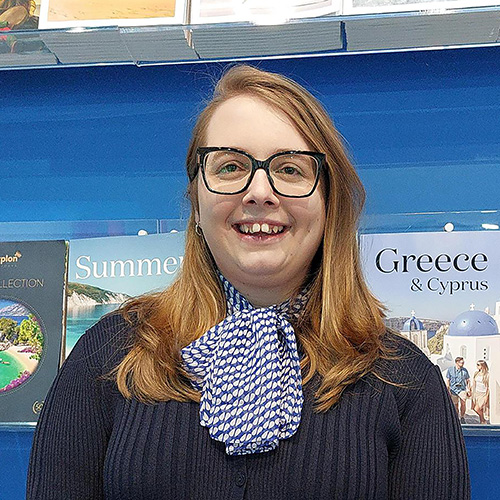Touring around amazing Sri Lanka

In the 13th Century, one of history's most famous explorers, Marco Polo, declared Ceylon to be ‘the finest island of its size in the world’ thanks to its astonishing natural beauty. These days this remarkable country is known as Sri Lanka, or The Pearl of the Indian Ocean, and it offers visitors a huge variety of delights, including beaches, wildlife, stunning landscapes, ancient ruins, and cultural sites. Sri Lanka has been steadily growing in popularity as a tourist destination and now features on many people’s travel bucket list. Lucky Sian from our Eastbourne shop got to enjoy a 12-day fully escorted tour with Sri Lanka experts Riviera Travel, and she describes her amazing trip around this unique country:
“The journey out was a smooth, direct evening flight from London Heathrow with Sri Lankan Airlines into Colombo. On arrival, we were met by Adrian, our Riviera Travel guide for the duration of our trip and we had a short drive to our first hotel, the 4* Arie Lagoon in Negombo. This was the perfect one-night stop to acclimatise, meet the group, and discuss the plan for the upcoming days. Here we were introduced to Dimitri, a local expert who would be joining us throughout the tour. The Arie Lagoon offers the most beautiful views across the Negombo Lagoon, and a two-minute walk across the road takes you to the sandy beach facing the Indian Ocean, with the skyline of Colombo to the south - I highly recommend heading over here for sunset, and to the lagoon for sunrise.
The next day we visited the main fishing area of Negombo, with a short walk around to see the fish markets, before travelling towards Habarana in the middle of the island. On route we stopped in Kurunegala and saw a large Buddha statue on the mountain side, before walking around Kurunegala Lake, spotting a range of birds and butterflies. Our next stop off was at the famous cave temples of Dambulla. We climbed the 300 steps (a sloping path is also an option) and enjoyed views across the valley toward Sigiriya Rock. Macaque monkeys in the trees made for an interesting walk to the temple entrance, where we left our shoes with the watcher, and went through to view the five main caves. Here, Dimitri guided us through the history of the temples, giving information on the history of the carvings, statues and paintings of Buddha.
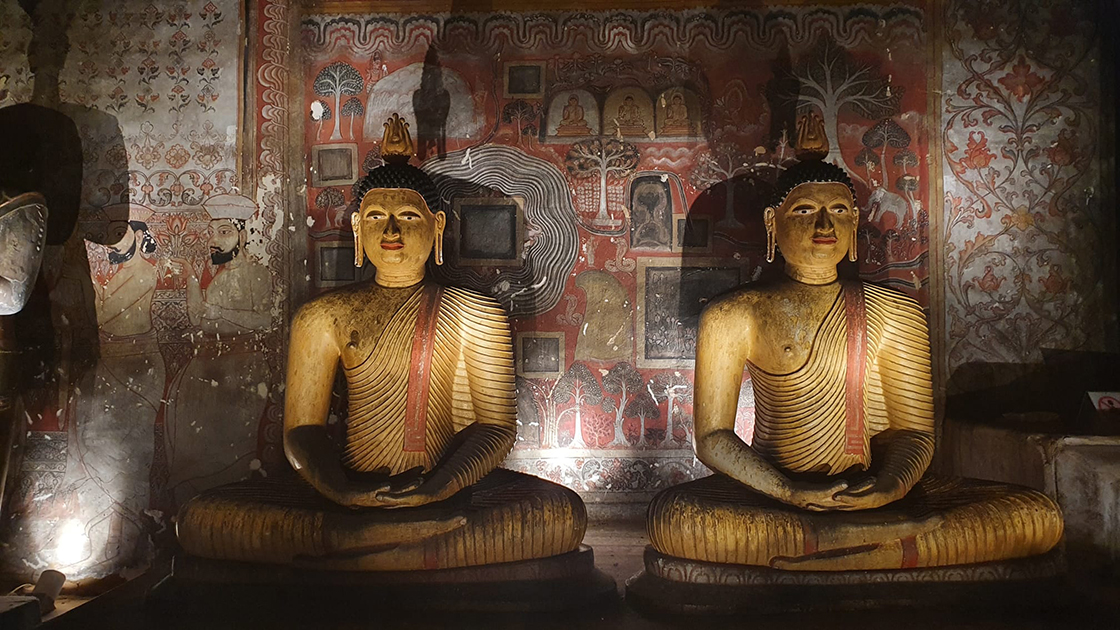
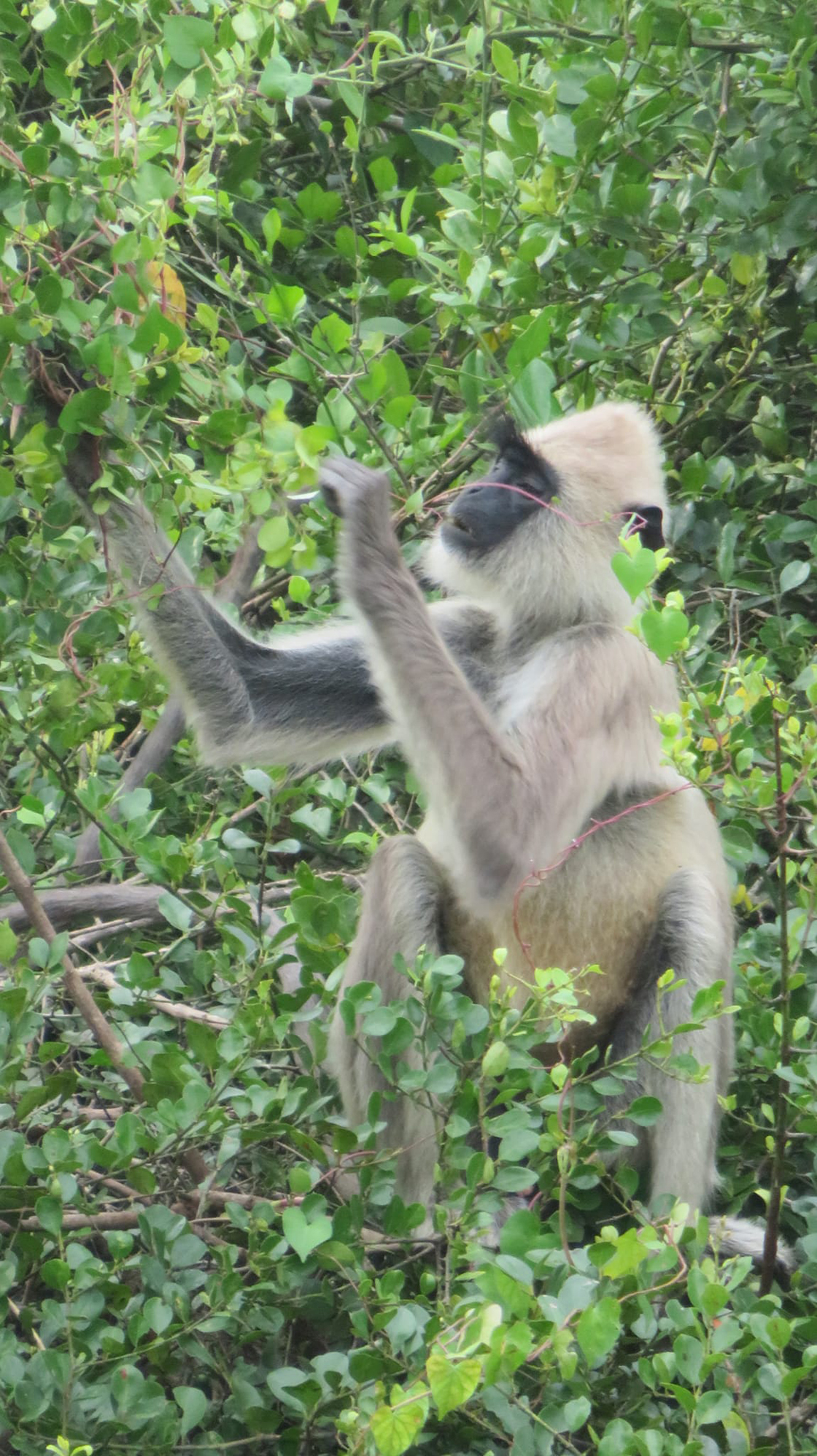
Our home for the next two nights was Habarana Lodge, a very different location compared to our previous coastal stay, as it was in the central tropical jungle region of Sri Lanka. The sounds of insects, frogs and birds filled the air, and this secluded hotel feels as close to nature as is possible. Here I had my first sighting of enormous flying foxes, their silhouettes clear against the evening’s stormy sky. This hotel is the perfect base to explore what the centre of the island has to offer, including Sigiriya Rock.
Also called Lion Rock, Sigiriya Rock is a massive granite column with the ruins of an ancient temple at the summit. We were advised by Dimitri that when he was a child, he would climb sections via rope and nothing else, but thankfully we took the safer route via the rock and metal stairs! The site has a museum and water gardens for those who don’t have a head for heights and would prefer to spend time admiring the grounds. The monolith itself stands at just under 600 ft, and with over 1,200 steps to the summit, it’s a feat to reach the top, but there are plenty of resting stops along the way and opportunities to enjoy the incredible views. Just over halfway up sit the two large carved lion’s paws which are all that remain of the citadel gate. Above this is the final stretch of stairs leading to the summit, where the ruins of the upper palace sit. There are mixed historical stories of the site, with the most accepted being that this palace was developed by King Kashyapa in the late 400CE as his royal citadel. On the way down, the metal walkway route takes visitors through an area with the best-preserved frescos on the site, where photography is forbidden due to the fragility of the art, and a spiral metal staircase provides the only route down from this area. The rest of the day was at our leisure, allowing the group to relax by the pools and be entertained by the macaques jumping through the fruit trees overhead.

We left Habarana behind and headed south to Kandy, stopping off at the Golden Temple on route. Here stands an immense golden statue of Buddha opposite a large gold dagoba (also known as a stupa - a site of pilgrimage or meditation).
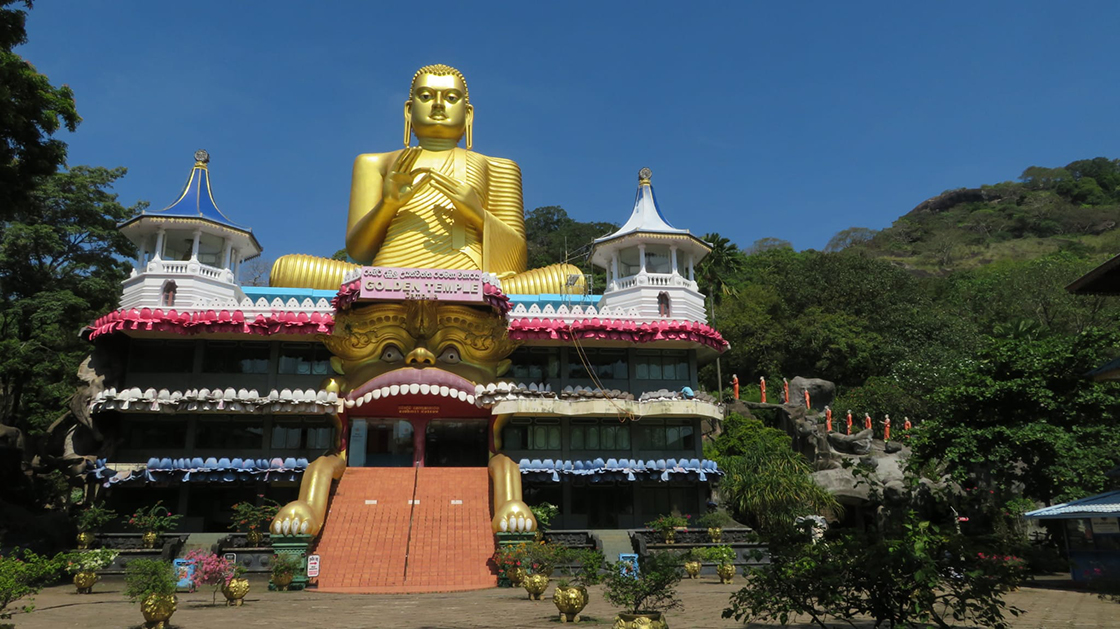
We continued our journey, stopping again at Matale to visit the spice gardens, where we were given a tour of the array of plants, both native and non-native, including peppercorns, cocoa beans and many other herbs and spices. Arriving in Kandy, we were welcomed to the Cinnamon Citadel, a beautiful 4* hotel on the banks of the Mahaweli River. Given the time of year, we were lucky to have not experienced much bad weather up until this point. The evening provided a spectacular storm, with wonderful views of the sky lighting, with silhouettes of hundreds of flying foxes - being nocturnal they were making their way from their roosts in the botanical gardens to feed for the night.
The following morning, the storm had cleared, and we were able to experience a highlight of the Signature Tour option - a guided boat trip along the Mahaweli River. We spotted Darters, Common and White-Throated Kingfishers, a Sea Eagle, Egrets, Water Monitor Lizards and Water Buffalo to name but a few - truly a wildlife enthusiast's paradise!
Our boat trip lasted an hour, taking us down to view the rapids at the top of the waterfall, past local families building houses and washing clothing along the sides of the river. After our boat trip, we joined the rest of the group for the short coach trip to the Royal Botanical Gardens in Peradeniya to explore independently or stay with Dimitri for an tour of the main points of interest - with over 140 acres of land, it would be easy to spend the whole day exploring the area. We were shown the flower gardens and palm tree walk, along with the cactus house and the fern gardens - my highlight was the orchid house. It was fascinating to walk through the area of trees planted by important figures of the past, including the cannon ball tree planted by King George and Queen Mary in 1901, and an orchid tree planted by Indira Gandhi in 1967. The gardens are not only important for conservation, education and research, but also for the historical significance - Lord Louis Mountbatten used them as the base for the Southeast Asia Command during World War 2.
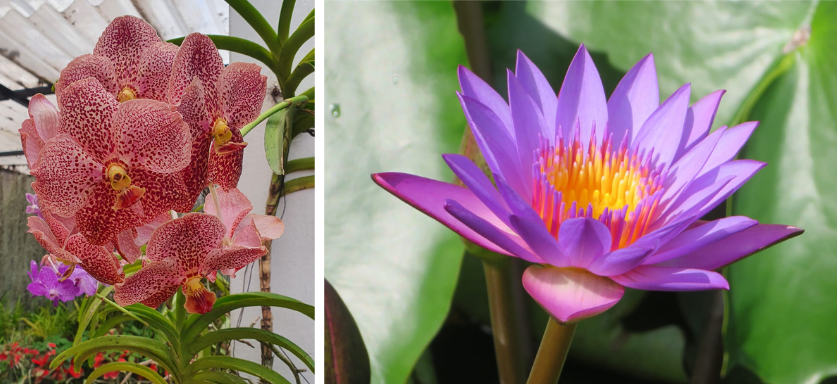
That evening we were taken to the local Red Cross Centre to watch a cultural dance show with traditional dances and worship rituals, accompanied by music played on traditional instruments. The show ended with an impressive fire display, with the dancers eating fire and walking across burning coals. A great evening, giving an insight into the culture of Sri Lanka.
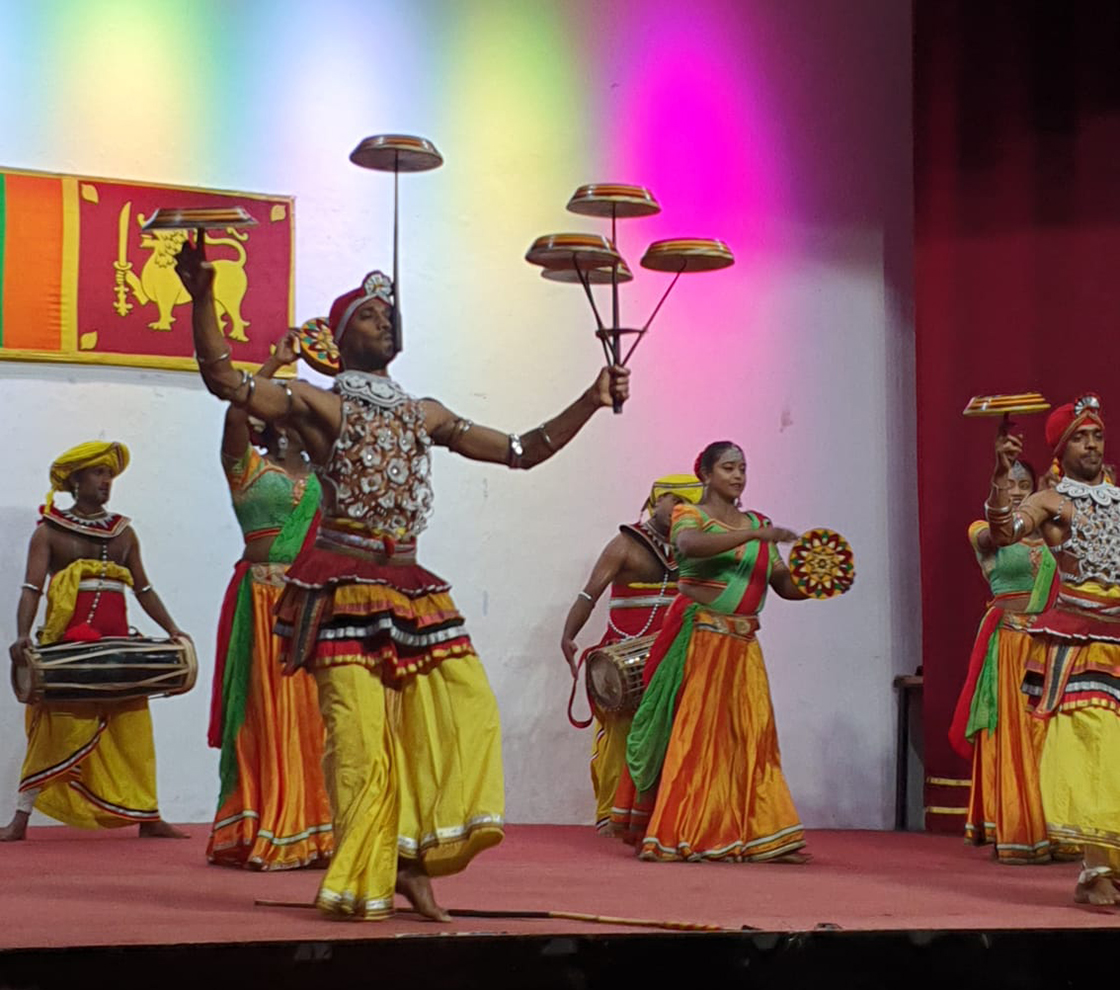
A week into the tour and we departed our third hotel and continued our journey south. A short drive saw our first stop of the day visiting a World Heritage Site - the Temple of the Tooth in Kandy, said to hold Buddha’s Tooth, a relic that historically meant whoever owned it would rule the country. It is an important spiritual site for Buddhist pilgrims and within the grounds is the Raja Museum, housing the taxidermy remains of Raja the elephant, who served as a “ceremonial tusker” for around 50 years, loved and recognised by all religions of Sri Lanka.
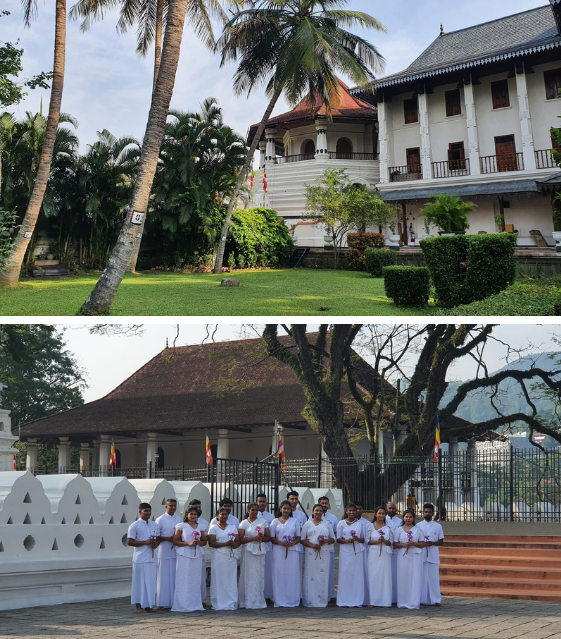
Continuing our journey we visited the Glenloch Tea Factory. Here, the women who collect tea leaves are expected to pick 20kg each within their 8-hour shift. We were shown the full process of making tea from leaf-picking through to packaging, which takes four days from start to finish, and of course we had a tasting!

Travelling ever higher towards Nuwara Eliya, we were treated to some of the most breathtaking views of the hills and valleys, rocky outcrops and forests, small villages, lakes and waterfalls, with sometimes sheer drops just the other side of the road. We arrived at our first 5* hotel of the trip - The Golden Ridge. Nestled high up in the foggy hills, the climate is much cooler than what we’d grown used to due to the high elevation. Here we walked over to The Sackville - an on-site bar resembling a greenhouse providing wonderful views while we enjoyed another highlight of the Signature Tour: the high tea experience, with a selection of hand-made delights. Following this, we had the option of free time or a trip down into the main town of Nuwara Eliya, a short trip by coach (or tuk-tuk!) to the main shops, bars, restaurants and the local pub. The next morning was one of the standout moments of the trip for me - waking up after 5am to the sounds of Buddhist monks chanting - a beautiful chorus, singing in unison, such a unique reminder of this new, breathtaking country.
Our party continued south the next day, towards the more arid zone of Sri Lanka. This was the longest drive of the trip, of almost 6 hours, with spectacular views and some worthwhile comfort stops - a shrine, a cafe with a balcony over the edge of a cliff, and the Ravana waterfall. The waterfall was a sight and sound to behold, and with some vendors by the roadside, I was able to purchase some local artwork. I must mention the musician positioned by the waterfall viewing platform. Never had I expected to view such a stunning sight whilst listening to Wannabe by the Spice Girls being sung off-key by a very enthusiastic local man playing the bongos!
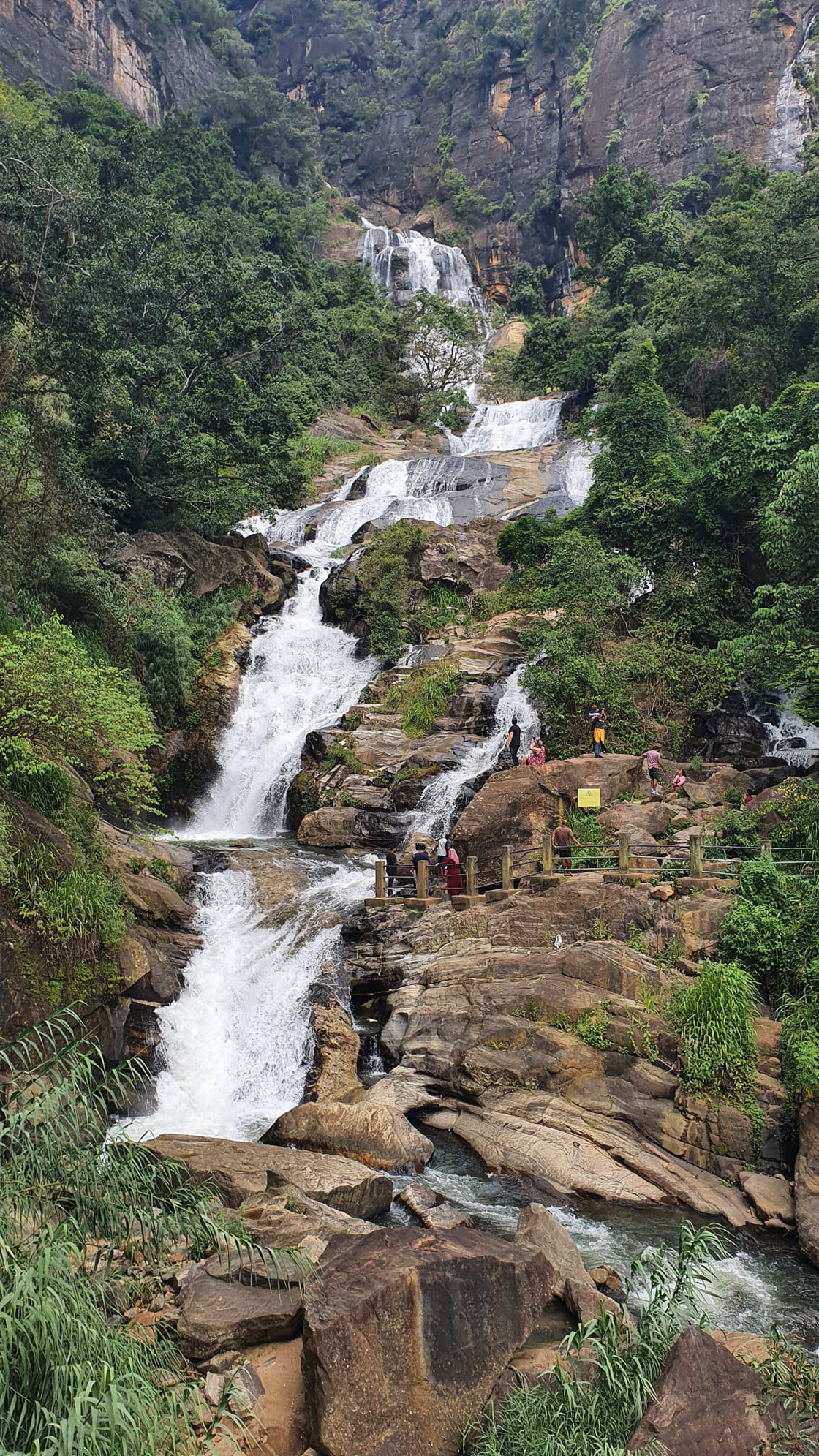
Our next stop was the Elephant Transit Home in Udawalawa. On the approach we had our first sighting of wild elephants at the roadside, wandering in and out of the underbrush. We saw feeding time at the sanctuary, where young injured, orphaned or abandoned elephants are cared for before being re-introduced to Yala National Park and surrounding areas. Watching the young elephants come running through a gate in groups of 3-4 to be fed milk before their greens was truly wonderful.

Around an hour and a half later we arrived at the Chaarya Resort & Spa in Tissamaharama, situated by the very aptly named Yoda Lake. This was to be our base for the next two nights, and the wildlife was again in abundance here, with visits from monkeys and geckos, along with one giant cricket who had found a home just by the reception. We had an early start the next day for our trip to Yala National Park for our safari day. We had a full 3 ½ hour safari in 6-seater jeeps. Many different species call Yala home, from Asian elephants and Sri Lankan leopards to sloth bears, monitor lizards and more bird species than I can name. As an avid lover of wildlife, I went with the knowledge that leopards are on a lot of people’s bucket-lists but are very elusive. I certainly wasn’t expecting that two hours into our drive a leopard would appear out of nowhere and walk across the path ahead of our jeep into the undergrowth on the other side!
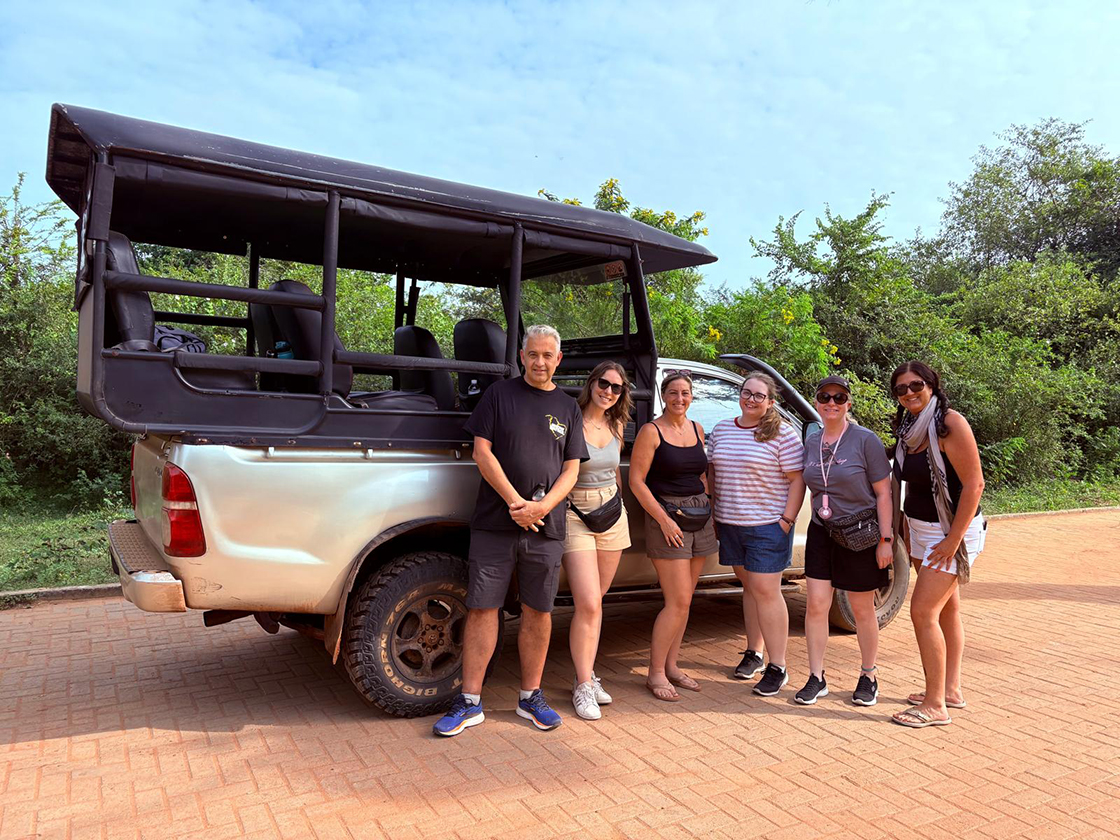
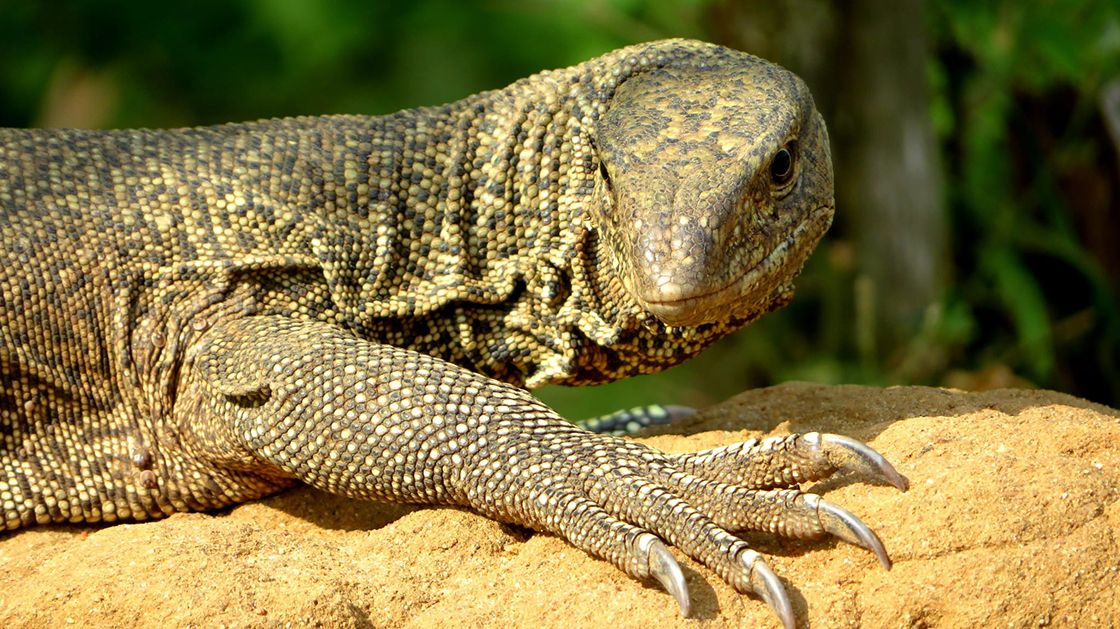
The afternoon could either be continued at leisure, or an optional second safari taken. Priced at 20,000 rupee (around £50), I jumped at the chance to go back out and visit a different area of the national park. We hadn’t been driving for long when we saw our first elephant of the day, silently walking at a comfortable distance! Around one hour into the drive, we noticed an area with many Jeeps crowding around and drove over to investigate. Sitting out in a grassy area, relaxing and enjoying the sunshine, was a leopard, shortly later joined by their mate. They both appeared very indifferent to us, so much so that we hadn’t noticed a third, the cub of this pair, fast asleep under a tree just a few metres away from the track! Watching these three in their natural environment, play fighting and resting, was the biggest highlight of the trip and something I’ll never forget. Our group was lucky to see many more species than we had in the morning, including Hornbills, an Oriole and a Pheasant-Tailed Jacana (also known as the Jesus bird as it appears to walk on water when it skims across lily pads!)
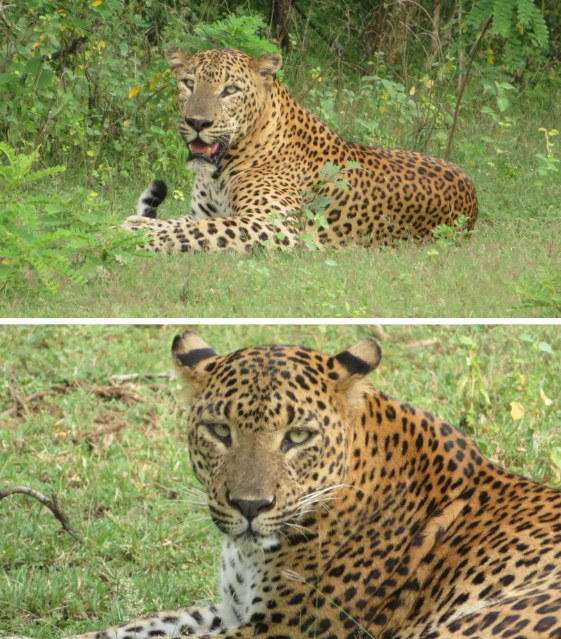
Day ten of the tour and our destination was west, towards our final hotel, but first we had some stops along the way. Visiting Galle, we had free time in the old town and an optional walking tour with Dimitri to visit the fort, lighthouse, several historic buildings and the world-famous cricket grounds.

Our next stop was unexpected as it is usually offered as an option for the following day, but we were treated to a visit to a turtle rehabilitation centre, where there was a talk on the work that they do assisting with the hatching and release of thousands of turtles. Touring the centre we saw newly hatched turtles, less than one day old. Being able to hold three-day old hatchlings was an incredible experience and the work the team do is so important.

All too soon we reached our final hotel of the tour - the 5* Anantara Kalutara, a stunning beach resort south of Colombo, and the end of our tour. I would highly recommend this hotel for those looking for a luxury beach-front stay in Sri Lanka - with kids and adult only pool options, gym and activities readily available (including kayaking across the lake), it has a lot to offer. On our final evening, our group met up to watch our final Sri Lankan sunset over the sea, one final breathtaking memory.”
.png)
My tips for travelling to Sri Lanka:
* The Sri Lankan rupee is a closed currency, for the best rates, exchange your spending money at the airport on arrival. Most popular credit/debit cards are also accepted in shops.
* Be prepared for the humidity with a small fan, and light, loose clothing.
* Speaking of clothing, make sure you bring along cover-up options for visiting temples and sacred sites where covering knees and shoulders and removing shoes is required (spare socks are handy!). Some, but not all sites, will have cover ups available to purchase.
* EGB! Elephant Ginger Beer - a refreshing, warming soft drink found in stores across the country, usually costing the equivalent of £1 or less. For an alcoholic option, cocktails made with Arak - a traditional spirit - are highly recommended.
* Buddha statues and carvings are sacred, and it is a sign of disrespect to take selfies with the statues. Photography is generally accepted in most areas, but your tour guide will advise you.
* Jump at the opportunity of optional excursions, like our second visit to Yala National Park - you never know what you might get to experience.









